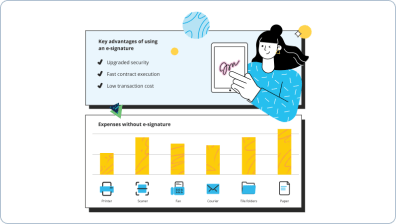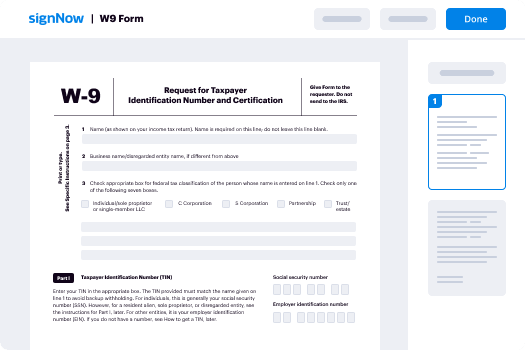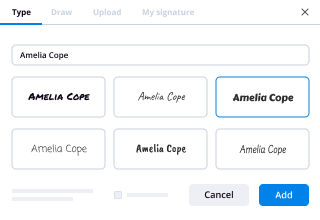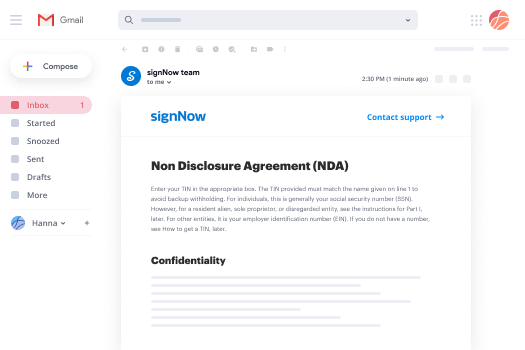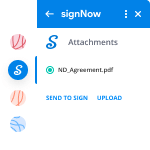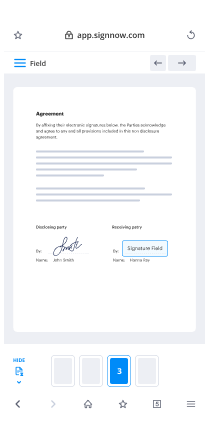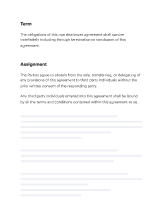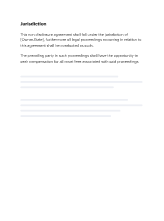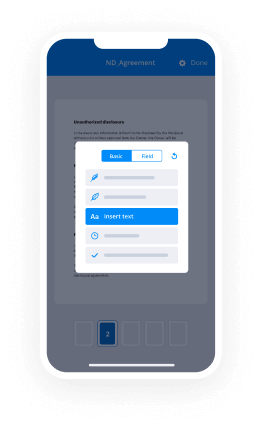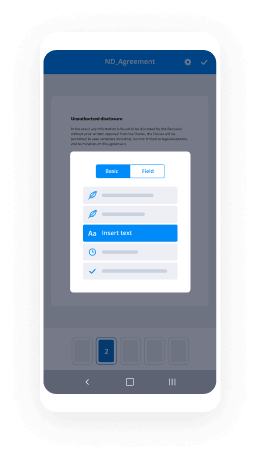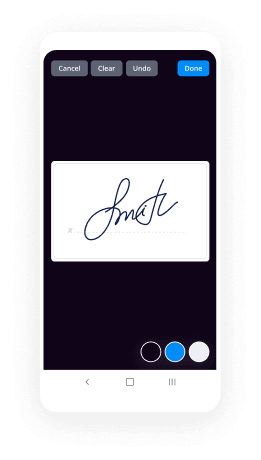Digital Signature Vs Electronic Signature
- Quick to start
- Easy-to-use
- 24/7 support
Simplified document journeys for small teams and individuals




We spread the word about digital transformation
Why choose airSlate SignNow
-
Free 7-day trial. Choose the plan you need and try it risk-free.
-
Honest pricing for full-featured plans. airSlate SignNow offers subscription plans with no overages or hidden fees at renewal.
-
Enterprise-grade security. airSlate SignNow helps you comply with global security standards.







Take full advantage of your eSignatures with airSlate SignNow
Boost paperwork
Edit samples securely
Share templates
Employ E signature vs digital signature
Incorporate eSignatures via API
Create simple workflows
Quick guide on how to use digital vs electronic feature
Is your organization ready to cut inefficiencies by three-quarters or more? With airSlate SignNow eSignature, weeks of contract negotiation become days, and hours of signature collection turn into a few minutes. You won't need to learn everything from scratch due to the intuitive interface and easy-to-follow instructions.
Take the following steps below to use the digital vs electronic sign functionality within a few minutes:
- Launch your browser and visit signnow.com.
- Join for a free trial run or log in using your electronic mail or Google/Facebook credentials.
- Click User Avatar -> My Account at the top-right area of the webpage.
- Personalize your User Profile with your personal data and adjusting configurations.
- Design and manage your Default Signature(s).
- Go back to the dashboard webpage.
- Hover over the Upload and Create button and choose the appropriate option.
- Click on the Prepare and Send button next to the document's title.
- Input the name and email address of all signers in the pop-up box that opens.
- Make use of the Start adding fields option to proceed to modify file and self sign them.
- Click on SAVE AND INVITE when completed.
- Continue to configure your eSignature workflow using more features.
It can't get any easier to use the digital vs electronic signature feature. It's available on your mobile devices as well. Install the airSlate SignNow application for iOS or Android and manage your custom eSignature workflows even while on the go. Put away printing and scanning, time-consuming filing, and costly papers shipping.
How it works
Rate digital vs electronic signature
What is digital vs electronic?
The terms "digital" and "electronic" are often used interchangeably, but they have distinct meanings, especially in the context of signatures. A digital signature is a specific type of electronic signature that uses cryptographic techniques to secure the authenticity and integrity of a document. Electronic signatures, on the other hand, encompass a broader range of methods for signing documents electronically, including scanned handwritten signatures, typed names, or clicks to accept terms. Understanding this distinction is crucial when navigating the eSignature process.
Steps to complete the digital vs electronic
Completing a document using digital or electronic signatures involves several key steps:
- Upload the document to airSlate SignNow’s platform.
- Choose the signature method: digital or electronic.
- Fill out any required fields within the document.
- Request signatures from other parties by entering their email addresses.
- Send the document for signature.
- Once all parties have signed, the completed document is securely stored and can be downloaded.
Legal use of the digital vs electronic
In the United States, both digital and electronic signatures are legally recognized under the Electronic Signatures in Global and National Commerce (ESIGN) Act and the Uniform Electronic Transactions Act (UETA). These laws establish that electronic signatures hold the same legal weight as traditional handwritten signatures, provided that all parties consent to use electronic means for signing. It is essential for users to ensure compliance with these regulations when utilizing eSignatures in their workflows.
Security & Compliance Guidelines
When using digital or electronic signatures, security and compliance are paramount. Users should consider the following guidelines:
- Utilize platforms like airSlate SignNow that offer encryption and secure storage for documents.
- Ensure that the identity of signers is verified through multi-factor authentication.
- Maintain an audit trail that logs all actions taken on the document, including who signed and when.
- Regularly review and update security protocols to align with industry standards.
Examples of using the digital vs electronic
Digital and electronic signatures can be applied across various scenarios, including:
- Contracts: Businesses can quickly finalize agreements without the need for physical meetings.
- HR documents: Employee onboarding forms can be signed electronically, streamlining the hiring process.
- Legal documents: Attorneys can send and receive signed documents securely, ensuring confidentiality.
- Real estate transactions: Buyers and sellers can sign agreements remotely, expediting the closing process.
Sending & Signing Methods (Web / Mobile / App)
airSlate SignNow provides flexible options for sending and signing documents. Users can:
- Access the platform via a web browser for desktop signing.
- Use the mobile app to sign documents on the go, ensuring convenience.
- Send documents for signature directly from integrated tools like Google Docs or CRM systems.
-
Best ROI. Our customers achieve an average 7x ROI within the first six months.
-
Scales with your use cases. From SMBs to mid-market, airSlate SignNow delivers results for businesses of all sizes.
-
Intuitive UI and API. Sign and send documents from your apps in minutes.
FAQs e signature vs digital signature
-
What is the difference between digital vs electronic signatures?
Digital signatures use cryptographic techniques to provide a higher level of security and authenticity, while electronic signatures are a broader category that includes any electronic indication of agreement. Understanding the difference between digital vs electronic signatures is crucial for businesses looking to ensure compliance and security in their document processes.
-
How does airSlate SignNow handle digital vs electronic signatures?
airSlate SignNow offers both digital and electronic signature options, allowing users to choose the method that best fits their needs. This flexibility ensures that businesses can comply with various regulations while enjoying the benefits of a streamlined signing process.
-
What are the pricing options for airSlate SignNow?
airSlate SignNow provides various pricing plans to accommodate different business sizes and needs. By comparing the features included in each plan, you can determine which option best supports your requirements for managing digital vs electronic signatures.
-
What features does airSlate SignNow offer for managing documents?
airSlate SignNow includes features such as customizable templates, automated workflows, and real-time tracking of document status. These tools enhance the efficiency of managing both digital vs electronic signatures, making it easier for businesses to streamline their document processes.
-
Can airSlate SignNow integrate with other software?
Yes, airSlate SignNow integrates seamlessly with various third-party applications, including CRM and project management tools. This capability allows businesses to enhance their workflows and manage digital vs electronic signatures more effectively across different platforms.
-
What are the benefits of using airSlate SignNow for electronic signatures?
Using airSlate SignNow for electronic signatures offers numerous benefits, including increased efficiency, reduced paper usage, and enhanced security. By understanding the advantages of digital vs electronic signatures, businesses can make informed decisions that improve their overall document management processes.
-
Is airSlate SignNow compliant with legal standards for signatures?
Yes, airSlate SignNow complies with various legal standards, including the ESIGN Act and UETA, ensuring that both digital and electronic signatures are legally binding. This compliance is essential for businesses that want to ensure the validity of their signed documents.
Digital vs electronic
Trusted eSignature solution - signature electronic
Related searches to vs electronic
Join over 28 million airSlate SignNow users
Get more for vs electronic signature
- Discover How to Change Signature Font in Adobe Sign ...
- Discover How to Easily Change Your Signature for ...
- Discover How to Change Signature in Outlook Web App ...
- How to Change Signature from Outlook
- Discover How to Change Signature in Adobe Reader with ...
- Unlock the Power of Change: Discover How to Change Sign ...
- Learn how to change signature in email in Outlook with ...
- Learn How to Change Sign Yourself in Adobe with ...
The ins and outs of eSignature
